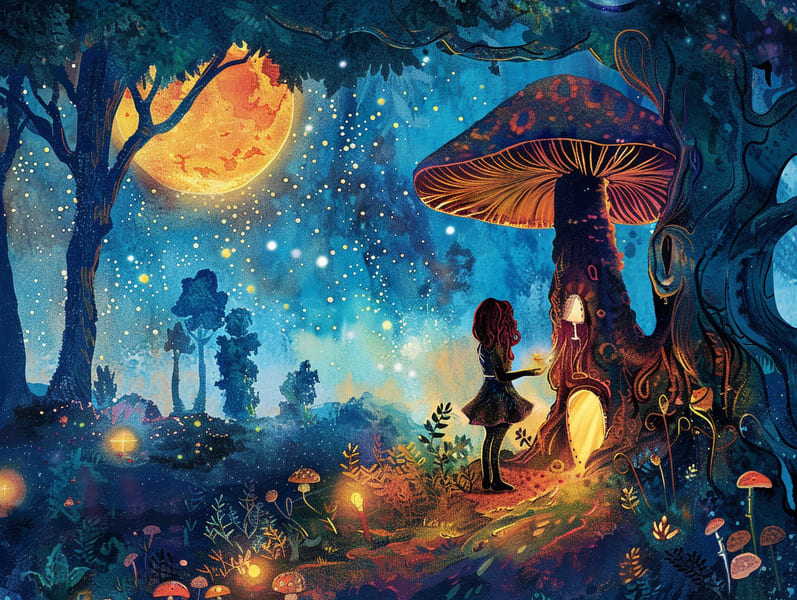Exploring the Roots of Historical Fairy Tales and Their Endless Loveliness.
Exploring the Roots of Historical Fairy Tales and Their Endless Loveliness.
Blog Article

Grimm's fairy tales have old origins. These tales have been conveyed from one generation to the next millennia before they were ever written down. They came from a variety of cultures, including Middle Eastern traditions. They were initially told among older generations, often carrying themes and messages mirroring the societal norms and beliefs of the time.
The renowned Brothers Grimm, Jacob and Wilhelm Grimm, were among the first to compile and publish many of these beloved narratives. Their published works, "Grimm's Fables," included narratives like "Cinderella," "The Story of Hansel and Gretel," and "Snow White," which have since become cornerstones in the world of famous fairy tales. Similarly, the Danish author's fanciful tales, such as "The Mermaid's Tale," and "The Duckling's Story," have captivated hearts worldwide, guaranteeing their place in the pantheon of beloved fairy tales.
Even though they are old, fairy tales remain as impactful as ever, especially as children's night stories. These charming stories are now available in different formats, including vibrantly illustrated books, fantastical animations, and internet fairy tales.
Their continued relevance can be traced to several magical reasons:
Ethical Lessons: Traditional fairy tales often impart important moral lessons. Tales like "The Shepherd Boy and the Wolf" teach the significance of truth, while "The Story of the Tortoise and the Hare" exemplify the benefits of perseverance and unassuming nature. These stories offer the young clear distinctions between truth and falsehood, molding their moral compass in a kind yet meaningful way.
Warmth and Understanding: Traditional fairy tales frequently feature beings facing challenges and struggles, motivating kids to feel with their struggles and rally behind their triumphs. For instance, "The Tale of Beauty and the Beast" shows us the value of looking deeper to see the true nature of a character, developing empathy and knowledge.
Cultural Awareness: Many fairy tales are infused with the cultural contexts from which they developed. Discovering these stories can provide fascinating glimpses into different customs, fostering a sense of global respect and appreciation.
Fantasy and Innovation: The supernatural elements in ancient fairy tales—magic wands—trigger children’s fantasy worlds. These fairy tales guide readers to enchanted realms, revitalizing creative dreams and a sense of wonder that endures a lifetime.
Classic get more info fairy tales are not only fantastical but also teaching. They act as delightful tools in nurturing various intellectual and emotional capacities in little ones. When traditional fairy tales are voiced, they improve language proficiency by showing new phrases and complex sentence structures. This practice also fosters listening abilities and attention, as the young hang on every word, anxious to see what happens next.
Furthermore, debating the themes and characters of traditional fairy tales can sharpen evaluative skills and analytical skills. The young are led to see patterns, predict happenings, and catch on to cause and effect. These debates also aid young ones verbalize their thoughts and feelings, adding to their emotional intelligence.
In today’s technological era, the presence of internet fairy tales has made these narratives more within reach than ever. Web-based platforms and applications supply large libraries of famous fairy tales that can be viewed or listened on anytime, anywhere. Fairy tales spoken are particularly sought after, supplying an delightful method for the young to savor these enchanting tales. Audiobooks and read-to-me stories guide characters and settings to life, often complemented by captivating music and soundtracks that intensify the storytelling experience.
The unfading fascination of classic fairy tales lies in their ability to adjust to modern society while sustaining their basic principles. Contemporary versions of these fairy tales often incorporate more varied protagonists and modern settings, making them meaningful to today’s audience. However, the core values of valour, humanity, and lawfulness remain unchanged, continuing to influence audiences of all ages.
Old fairy tales also offer a sense of security and familiarity. They bring a methodical narrative with a evident beginning, middle, and end, often wrapping up with the closure of conflicts and the triumph of truth over falsehood. This regularity can be solacing for young readers, imparting a sense of stability in an unstable world.
Ancient fairy tales continue to enchant and coach new generations, maintaining their wonder and meaningfulness in modern society. As bedtime stories for kids, they introduce a perfect blend of fascination and comprehension, fostering moral values, empathy, and creativity. The presence of digital fairy tales and the well-liked nature of fairy tales narrated warrant that these classic tales remain available to new generations.
By protecting and spreading these narratives, we continue to exalt the rich tapestry of human imagination and cultural heritage. Whether you are exploring a artistically illustrated book, delving into a electronic library, or playing an voice book, the spell of old fairy tales is always within reach. These tales demonstrate of the persistent ability of stories and its ability to bond us across centuries and lands.
Even if you are seeing a vibrantly illustrated book, discovering a internet collection, or listening through an voice book, the enchantment of ancient fairy tales is always within reach.
These tales show us of the endless effect of stories and its ability to gather us across epochs and places, casting a charm that charms and informs alike.